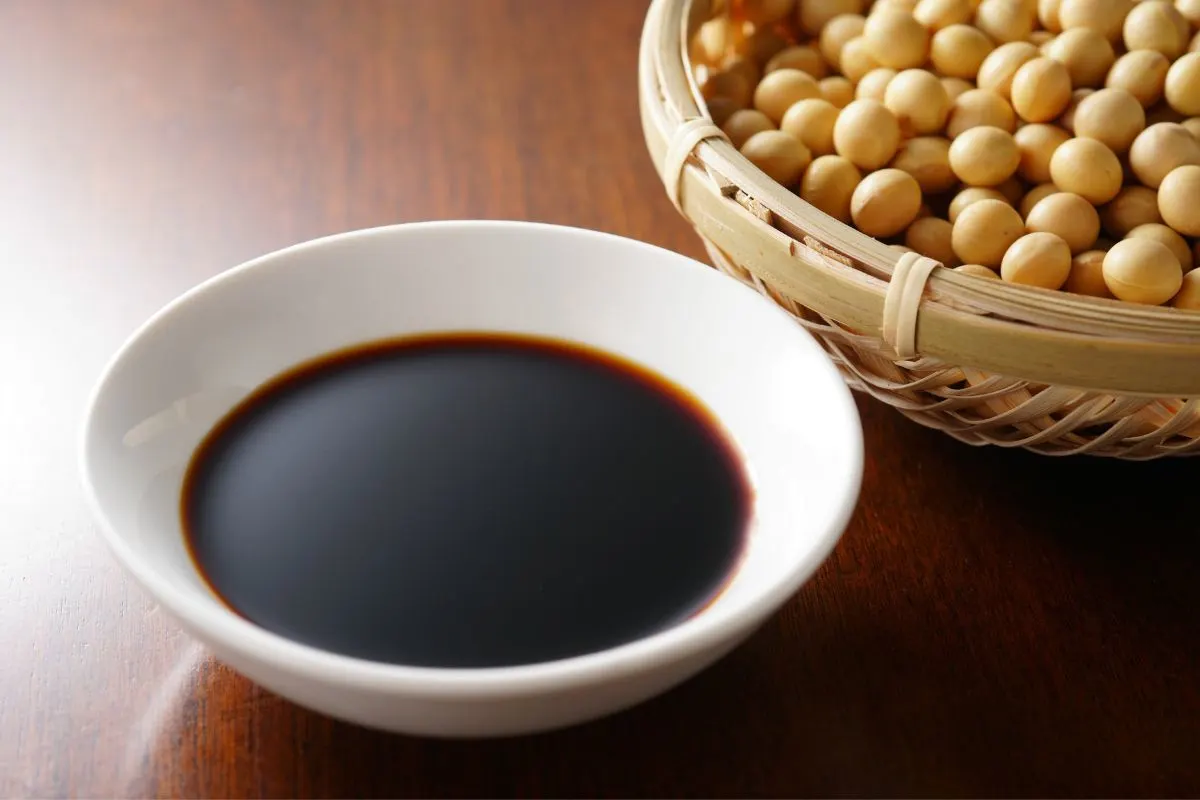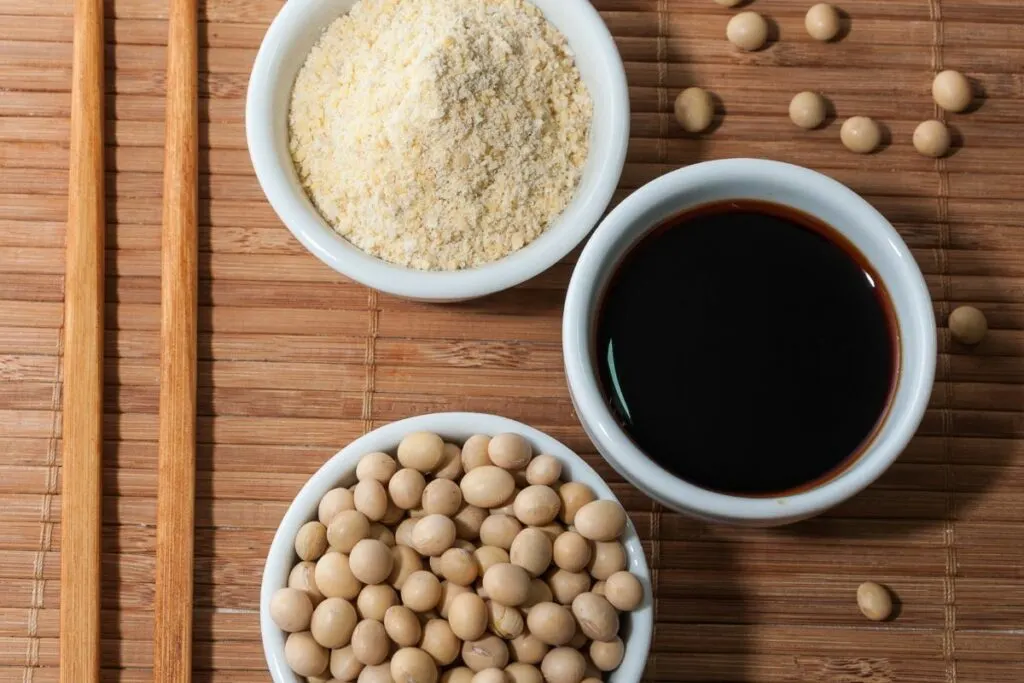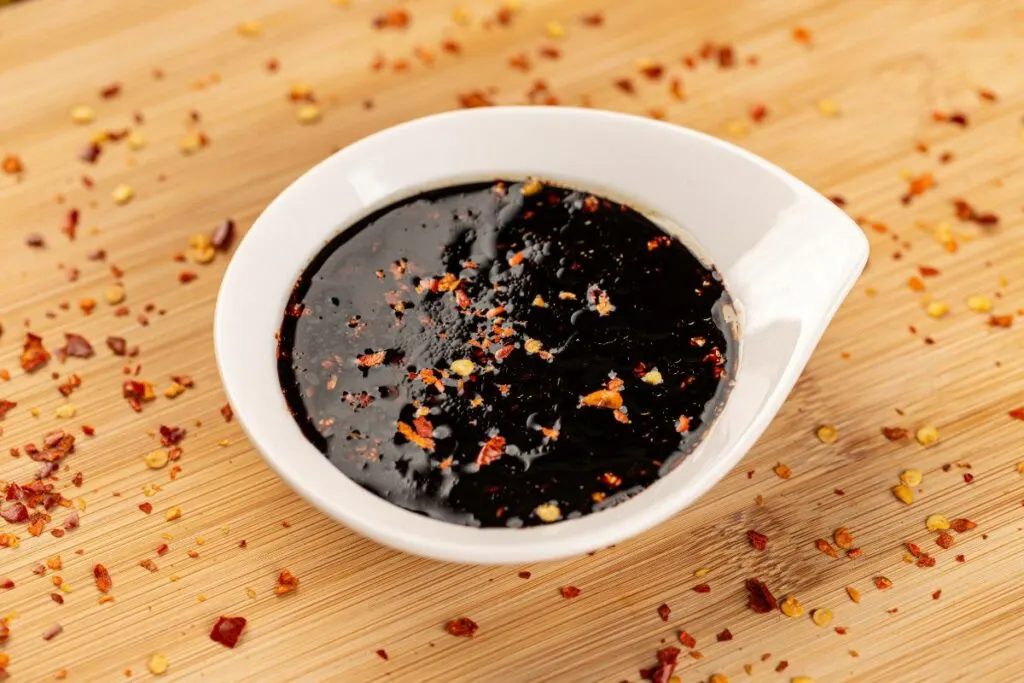Soy sauce is one of the most popular Chinese sauces in the world, if not the most popular. These days, soy sauce comes in many versions and are specific to certain recipes. One of which is light soy sauce. But what if you don’t have light soy sauce on hand? Well, I’ve got the best light soy sauce substitutes lined up just for you.
You can substitute light soy sauce include tamari, dark soy sauce, teriyaki sauce, and coconut aminos. But they aren’t the only ones. So, let’s hop in and explore some more!

Jump To
🤷 What is Light Soy Sauce?
Light soy sauce, also known as thin soy sauce, is a type of soy sauce that’s commonly used in Chinese and Southeast Asian cuisine. It’s made from soybeans, wheat, salt, and water and has a light, thin consistency and a salty, slightly sweet taste. The sauce is used primarily as a seasoning and a flavor enhancer in stir-fries, marinades, and even specific pork chop sauces. Light soy sauce also has a lower salt content and a lighter color.
📌 Light Soy Sauce vs Dark Soy Sauce
Light soy sauce, with its lighter color and saltier taste, is commonly employed in marinades, sugar free salad dressings, and dipping sauces, adding that salty and umami kick. Dark soy sauce, with its deeper color and richer, slightly sweet flavor, is prized for its versatility in braises, stews, and stir-fries to add color, depth, and a touch of sweetness.
🧑🍳 How to make Light Soy Sauce
To make light soy sauce, ferment soybeans with wheat and salt, allowing the mixture to develop a balanced flavor profile. The fermentation process contributes to the sauce’s characteristic salty and umami notes. After fermentation, press the liquid from the solids. The resulting sauce then undergoes a pasteurization step to ensure quality and safety. The light soy sauce is then filtered and bottled for use.
🫕 How to Use Light Soy Sauce
Dips, marinades, and stir-fries can all benefit from the addition of light soy sauce, including American-born sauces, like Mumbo sauce. But there are many other dishes that employ light soy sauce’s incredibly salty, briny, slightly sweet umami richness. Here are several recipes that you can try.
- Steamed fish with soy-ginger-scallion sauce
- Silken tofu topped with savory onion-garlic-soy sauce
- Soy-glazed fish
- Jerk Chicken
- Soy Sauce Chicken
- Marinated Eggs
- Marinated Crabs
- Filipino-style Barbecued Pork Belly
- Pork spare ribs with soy-lime marinade
- Dimsum with a light soy sauce dipping
- Xiao long bao with a black vinegar-light soy sauce-ginger dipping sauce

💡 6 Light Soy Sauce Substitutes
Tamari
Tamari is a strong-flavored, high-soybean-content soy sauce. This is an excellent substitute for light soy sauce not only because it tastes similar but also because many tamari brands offer gluten-free sauces. So, people who are allergic to wheat and looking for a gluten-free option can safely opt for tamari. However, there is a flavor difference because there is no wheat involved in making this sauce. So, when substituting tamari for light soy sauce, use a 1:1 ratio.
Dark Soy Sauce
Dark soy sauce is thicker, less salty, and has a stronger flavor than light soy sauce. So a little tinkering with dark soy sauce can yield a good substitute for light soy sauce. Add a pinch of salt and a splash of water to thin the soy sauce. There may still be stronger flavors added from the dark sauce, so it’s not an exact match, but it’s very close. You can use it in a one-to-one ratio, but if you can’t find any, you can try using some dark soy sauce substitutes instead.

All-Purpose Soy Sauce
Just like light soy sauce and sweet soy sauce, all-purpose soy sauce lends a salty umami flavor to dishes without overpowering the dish. This versatile flavor enhancer can be used as a substitute for light soy sauce, with or without a dash of water to thin it out. This type of soy sauce is the closest in flavor and consistency to light soy sauce, and can be used at a 1:1 ratio. You can even use a sweet sauce soy substitute instead as it’s also vastly similar.
Teriyaki Sauce
Teriyaki sauce is a delicious Japanese sauce with a perfect balance of flavor and usability. Soy sauce is one of the ingredients in teriyaki sauce, so it would make a great substitute. It only matches the salty characteristics of light soy sauce, so thin it with water and season it with salt to use as an appropriate substitute for light soy sauce. When you’ve achieved the flavor and texture you want, you can use it in a 1:1 ratio. If you can’t find any, try using teriyaki sauce substitutes instead.

Liquid Aminos
Another gluten-free alternative to light soy sauce, liquid aminos have a sweet, salty taste. While still made from soy, they are unfermented and less salty compared to light soy sauce. They also provide a similar, umami flavor of soy sauce, though not as intense and somewhat sweeter. To substitute this in your recipe, you can begin with an equal ratio (1:1) and gradually increase the amount to suit your needs.
Coconut Aminos
Coconut aminos are an excellent substitute for light soy sauce in your cooking, especially if you’re watching your salt intake or avoiding soy or gluten. Coconut aminos have a nutty, sweet & salty flavor, overall less salty compared to light soy sauce. If you don’t mind a very mild coconut flavor in your food and prefer less salty options, this is an excellent substitute. Use the same amount of coconut aminos as directed in the recipe.
🧐 FAQs
Tamari sauce is a popular gluten-free option that can be used in place of soy sauce. Coconut aminos is another gluten-free alternative that has a similar flavor to soy sauce. Both of these options can be used as a substitute for dark soy sauce in recipes.
To make light soy sauce, combine one part soy sauce with one part water. This will give you a lighter, less salty version of soy sauce that can be used in recipes that call for light soy sauce.
Kikkoman is the most popular brand of light soy sauce that can be found in grocery stores. Lee Kum Kee is another popular brand that makes both light and dark soy sauce. Pearl River Bridge is a brand applied in Chinese cooking known for being a high-quality soy sauce.
